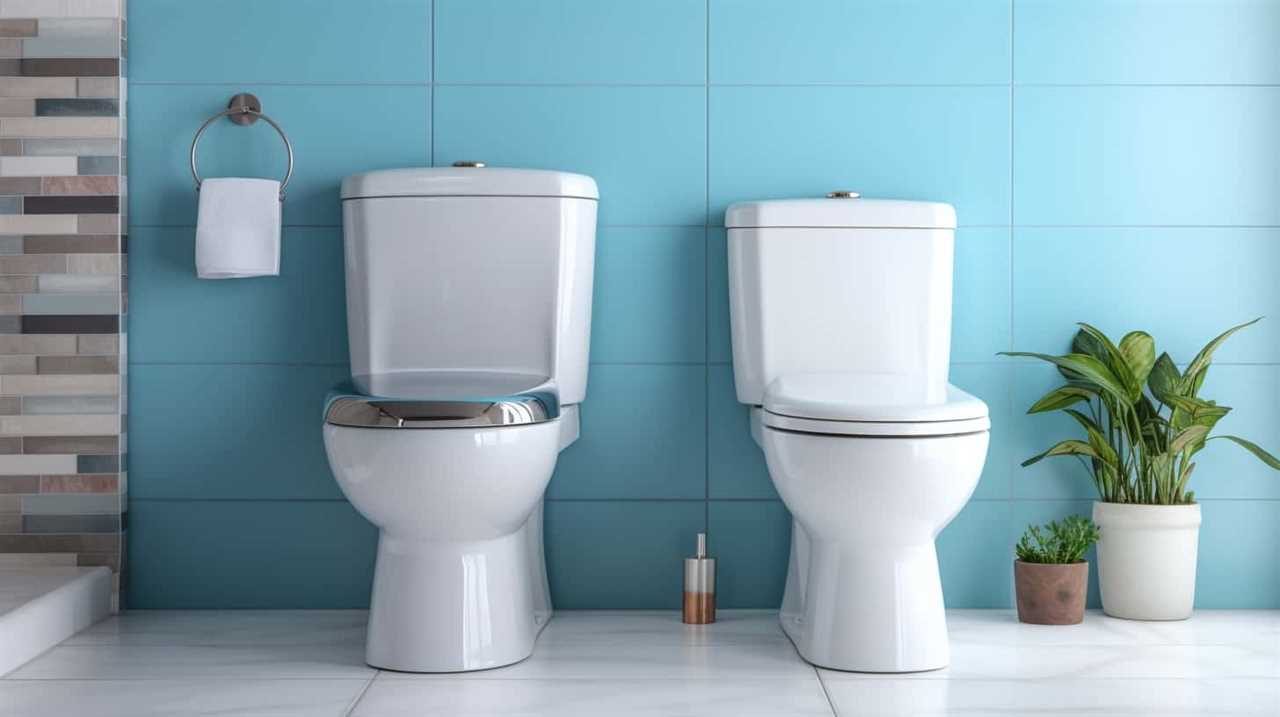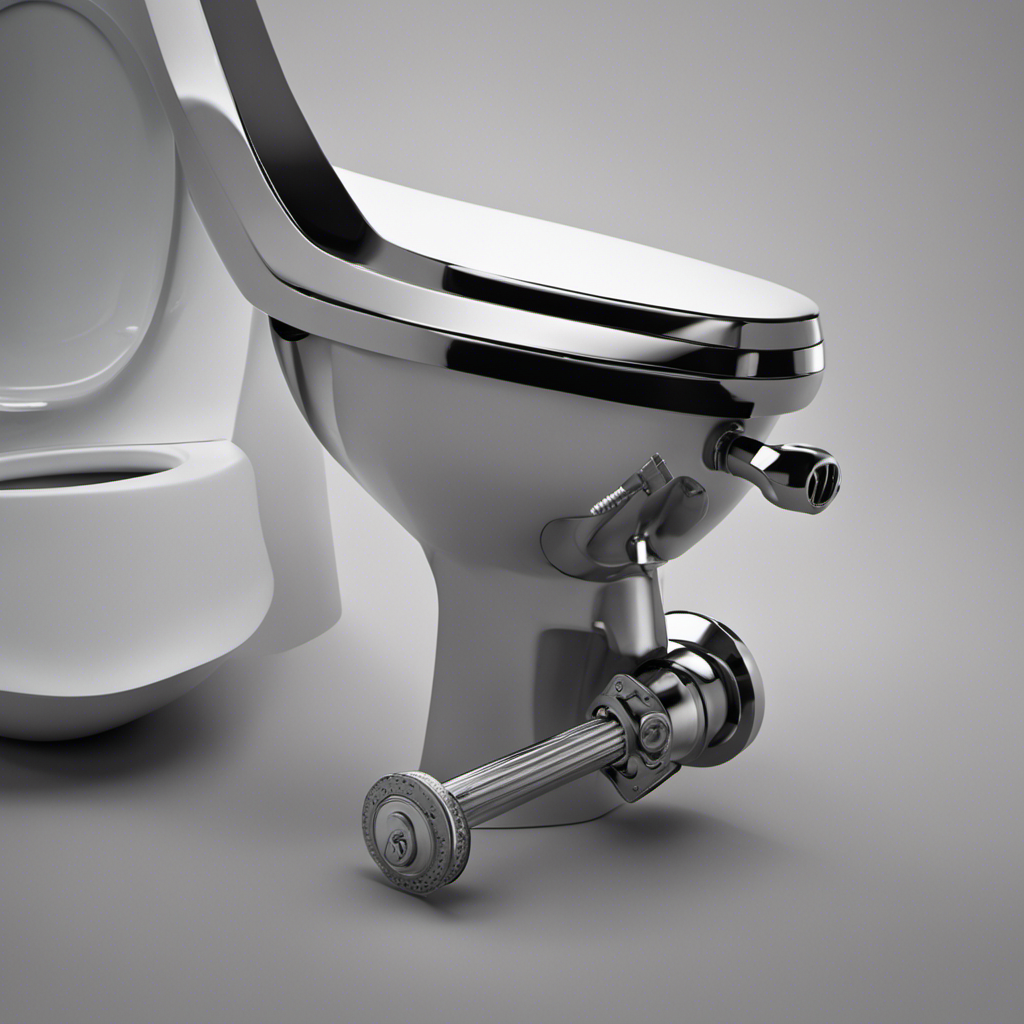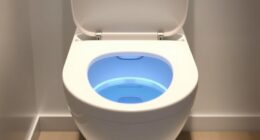We all know that the humble toilet is an indispensable part of our daily lives. But have you ever wondered just how much water it consumes with each flush?
In this article, we delve into the world of single flush toilets and explore the factors that affect their water usage. From comparing different models to offering tips for reducing water consumption, we aim to empower you with the knowledge and solutions to make a difference in toilet water conservation.
Let’s dive in!
Key Takeaways
- Single flush toilets use an average of 1.6 gallons of water per flush.
- Water-saving toilet designs aim to reduce water consumption without sacrificing performance.
- Choosing a toilet model with lower water usage can significantly reduce overall water consumption in households.
- Implementing water-saving techniques and considering eco-friendly toilet options can significantly reduce water consumption.
Average Water Consumption of Single Flush Toilets
We use an average of 1.6 gallons of water per flush with single flush toilets. This water consumption may seem trivial, but when you consider the number of times a toilet is flushed in a day, it becomes clear that the impact on our environment is significant.
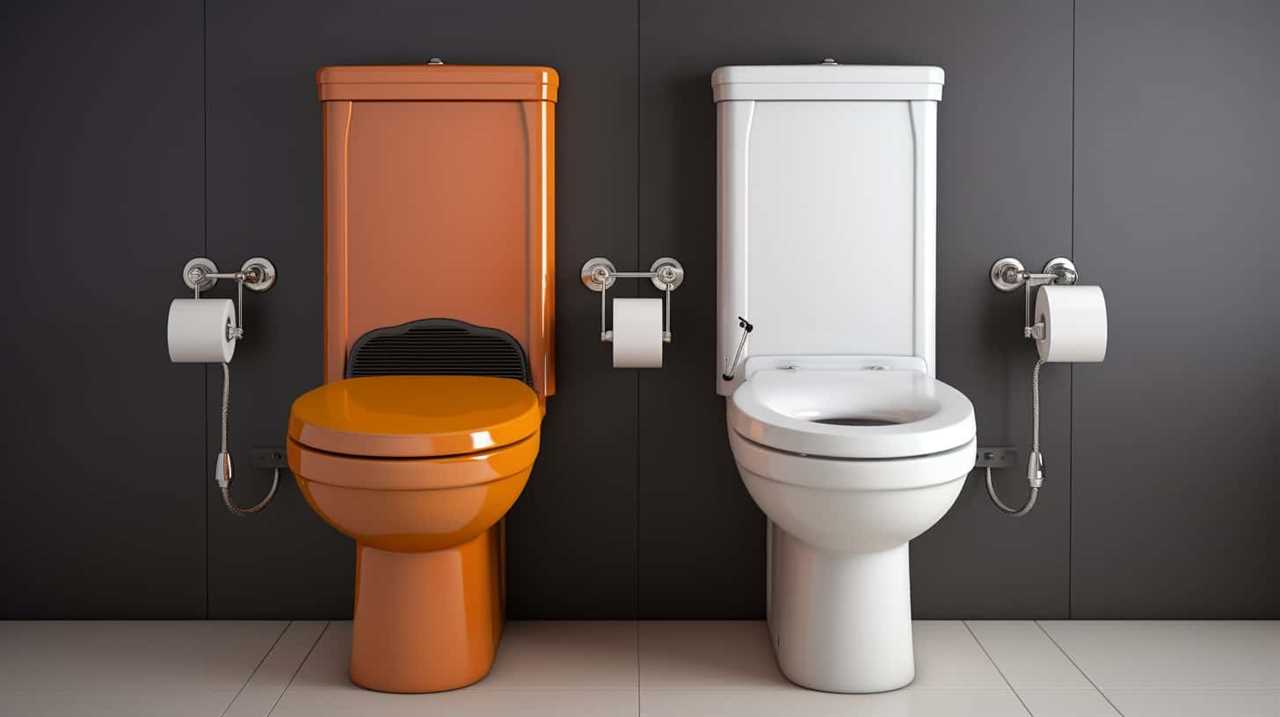
Traditional single flush toilets are notorious for their high water usage, and this has led to the need for water-saving toilet designs. These designs aim to reduce water consumption without compromising performance. By incorporating features such as dual flush options, improved flush mechanisms, and efficient bowl designs, these toilets can significantly reduce water usage per flush.
Implementing water-saving toilet designs is essential in mitigating the environmental impact of toilet water usage and ensuring a sustainable future.
Factors Affecting Water Usage in Toilets
To understand the factors affecting water usage in toilets, let’s examine the various components that contribute to the overall water consumption of a single flush toilet.
- Toilet Water Efficiency: One of the key factors that impacts water usage is the toilet’s water efficiency. Older models tend to use more water per flush compared to newer, more efficient toilets. Upgrading to a high-efficiency toilet can significantly reduce water consumption.
- Impact of Toilet Design: The design of the toilet also plays a role in water usage. Features such as the size and shape of the bowl, the flushing mechanism, and the presence of dual flush options can affect how much water is used per flush. Opting for a toilet with a smaller bowl and a dual flush system can help conserve water.
- Maintenance and Leak Detection: Regular maintenance and leak detection are crucial in maintaining toilet water efficiency. Small leaks can lead to significant water waste over time. Checking for leaks and promptly repairing them can prevent unnecessary water consumption.
Understanding these factors can help individuals make informed choices when it comes to selecting a toilet and maintaining its water efficiency.

In the next section, we’ll compare the water usage between different toilet models to provide further insights.
Comparison of Water Usage Between Different Toilet Models
When comparing the water usage between different toilet models, it is important to consider their efficiency and design. Residential and commercial toilets have different water usage patterns due to their intended purposes. Residential toilets are designed to be used by a smaller number of people and typically have a lower flush volume. On the other hand, commercial toilets are designed for high traffic areas and often have a higher flush volume to ensure effective waste removal. The impact of toilet flushes on overall water consumption in a household can be significant. By choosing a toilet model with lower water usage, households can reduce their water consumption and contribute to water conservation efforts. To help you make an informed decision, here is a comparison of water usage between different toilet models:
| Toilet Model | Flush Volume (gallons) |
|---|---|
| Residential Model | 1.28 |
| Commercial Model | 1.6 |
Tips for Reducing Water Consumption in Toilets
One way to reduce water consumption in toilets is by implementing simple water-saving practices. Here are some effective water-saving techniques and eco-friendly toilet options that can help reduce water usage:
- Install a dual-flush toilet: These toilets have two buttons, allowing users to choose between a full flush for solid waste and a half flush for liquid waste. This can significantly reduce water usage.
- Use a toilet tank bank: Placing a toilet tank bank in the toilet tank can displace water and reduce the amount used per flush.
- Adjust the fill valve: Ensuring that the toilet’s fill valve is adjusted properly can prevent water from continuously running and wasting water.
Implementing these water-saving techniques and considering eco-friendly toilet options can have a significant impact on reducing water consumption in toilets while still maintaining a high level of functionality and efficiency.
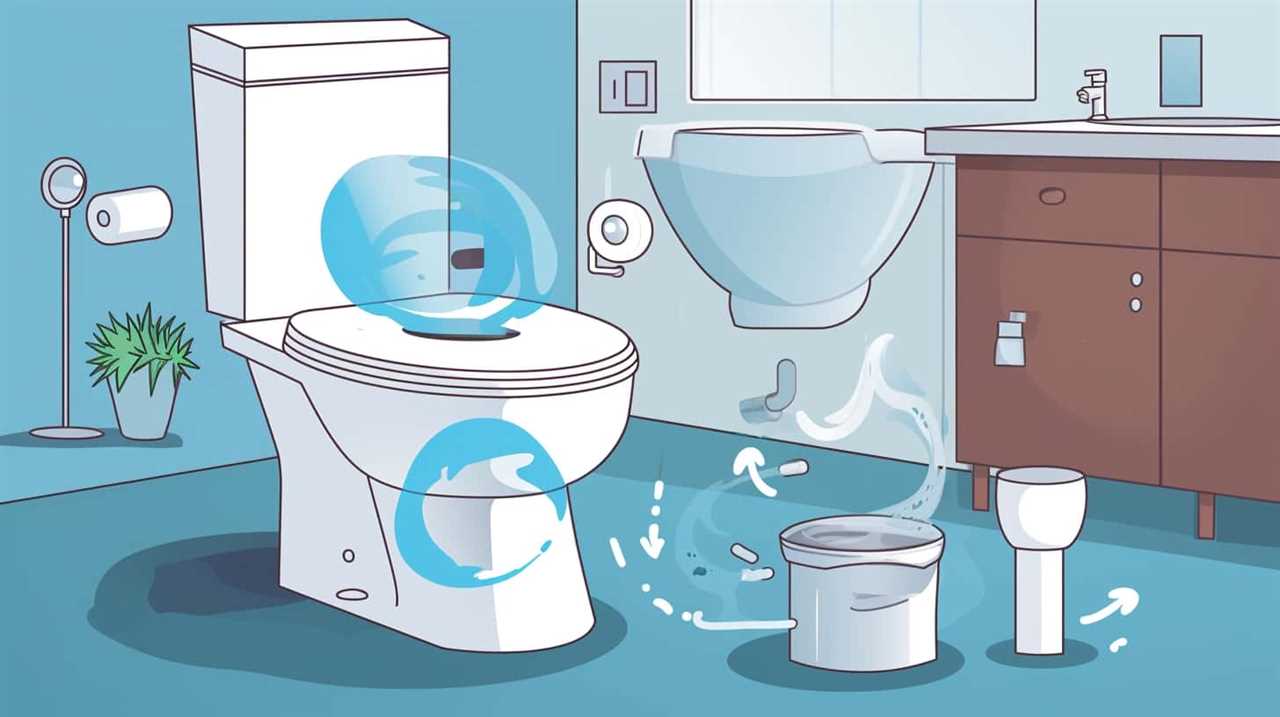
Future Innovations in Toilet Water Conservation
Our research team has identified several promising innovations in toilet water conservation.
With the increasing impact of water scarcity on toilet design, smart toilet technology has emerged as a potential solution. These advanced toilets are equipped with sensors and algorithms that optimize water usage. For instance, they can detect the user’s presence and adjust the flush volume accordingly.
Additionally, smart toilets can analyze waste composition and determine the appropriate flush strength, further reducing water consumption.
Another innovation is the use of dual-flush toilets, which offer separate flush options for liquid and solid waste, allowing users to choose the appropriate amount of water for each flush.
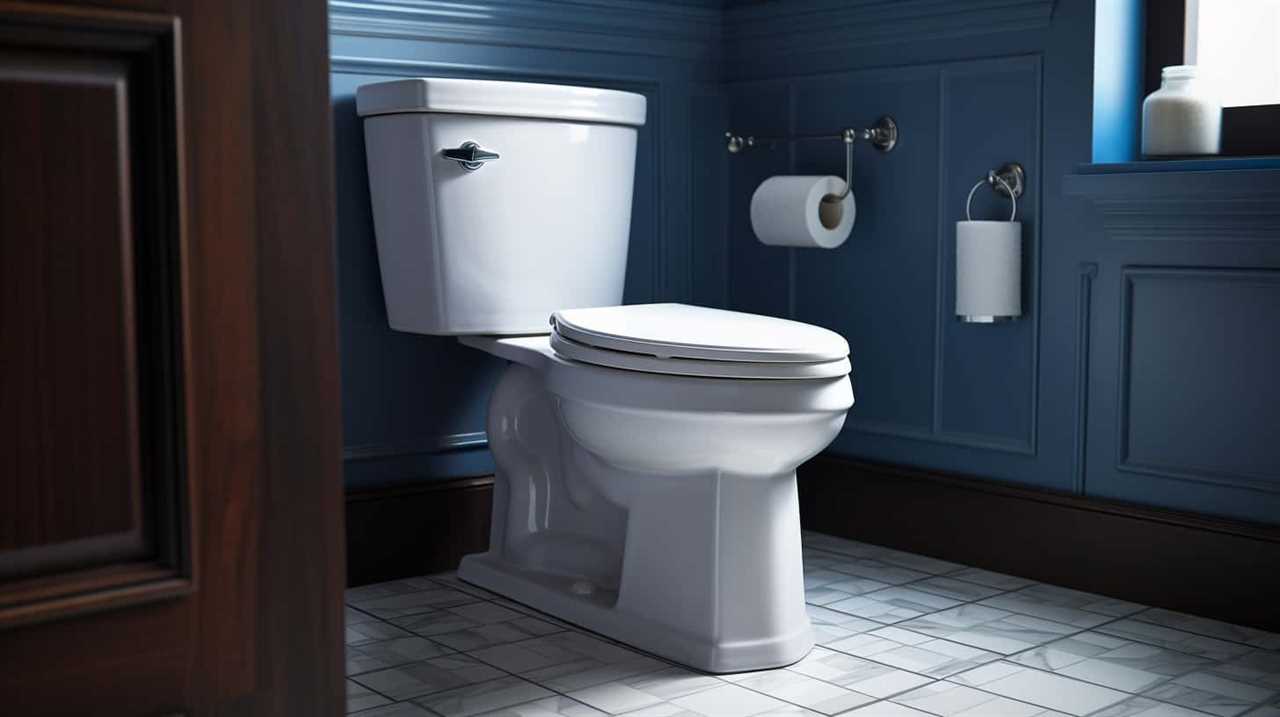
These advancements in toilet water conservation hold great potential in addressing the challenges posed by water scarcity and promoting sustainable water management.
Frequently Asked Questions
What Is the Average Cost of Water Usage for Single Flush Toilets?
On average, the cost of water usage for single flush toilets depends on the average water rates in your area. However, it is important to consider the environmental impact and explore water-saving solutions.
Are There Any Government Regulations on Water Usage for Toilets?
Pros and cons of government regulations on water usage for toilets vary. Regulations can reduce water consumption, saving resources and money. However, they may limit user choice and require costly upgrades. Impact on the environment is generally positive, conserving water.
Can You Retrofit an Old Toilet to Reduce Water Consumption?
Yes, you can retrofit an old toilet to reduce water consumption. There are various retrofitting techniques available, such as installing a dual-flush system or a toilet tank bank. These techniques not only conserve water but also provide benefits for the environment and your water bills.
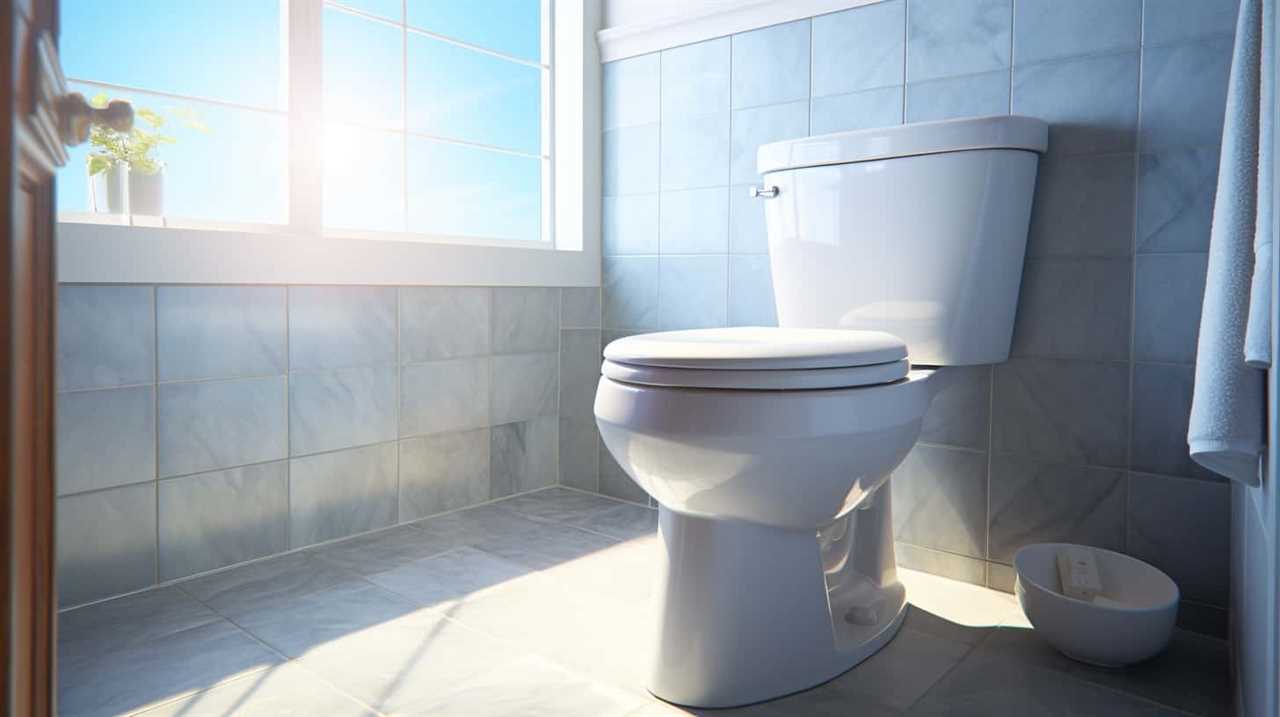
How Does the Water Usage of Single Flush Toilets Compare to Dual Flush Toilets?
Single flush toilets typically use more water than dual flush toilets. By implementing water-saving strategies, such as retrofitting old toilets or installing dual flush systems, we can reduce water consumption and minimize the environmental impact.
Are There Any Smart Technologies Available to Monitor and Control Water Usage in Toilets?
Smart toilet technology allows for monitoring and control of water usage, providing numerous benefits such as conservation, cost savings, and environmental sustainability. Water monitoring and control in toilets is essential for achieving optimal efficiency and reducing waste.
Conclusion
In conclusion, the average water consumption of a single flush toilet can vary depending on various factors.
By comparison, different toilet models exhibit different water usage patterns.

However, there are tips available to reduce water consumption and innovative solutions being developed for future toilet water conservation.
With these measures, we can effectively address the issue of excessive water usage in toilets and promote sustainable practices.
Let’s flush away wasteful habits and pave the way for a greener future.
